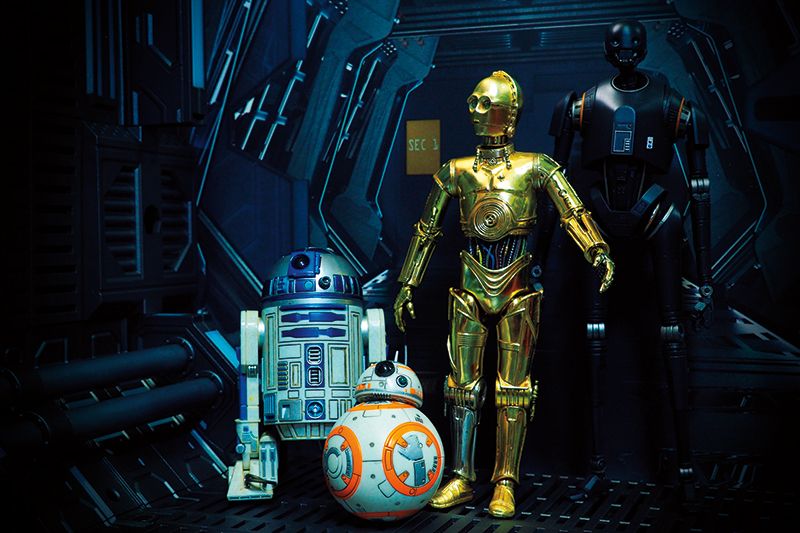AI in a Galaxy Not So Far Away – A Sixth-Grader’s Perspective
Many people dream of living a life like a Jedi in the Galactic Empire, but how many people come to realize that their own lives are not that different from one in Star Wars? Dharani Purushotham shows the connections between the “Star Wars” universe and AI.
Like many people, I love watching movies. One of my favorites is the “Star Wars” series. Recently watching “Star Wars,” I observed Jedis and Dark Lords fighting with light sabers, and droids flying around in starships. I noticed how similar “Star Wars” is to something we’ve been seeing lately: AI (Artificial Intelligence).
Taking a closer look at AI and “Star Wars,” there are many connections we can see. In “Star Wars,” AI is mostly represented by droids like R2-D2, BB-8, C-3PO, and many others. These droids serve various roles from nurses and soldiers to advisors and companions. They reflect some of the challenges and potential that AI offers in our own world.
Droids and Data
There are many types of droids present in “Star Wars.” They are humanoids programmed for different tasks. Let’s look at C-3PO and R2-D2 for example. C-3PO is a protocol droid who is fluent in many languages and has a striking sense of etiquette. Meanwhile, R2-D2 is an “Astromech” droid who is skilled in repairing starships. These droids show how AI can increase productivity and efficiency. The droids make lives easier in the “Star Wars” galaxy, much like how AI-fueled technologies can assist us today.
These droids are far more sophisticated than most robots of our world, today. In a 2016 TechCrunch article, contributor Evaldo H. de Oliveira estimated the amount of data needed to manage the Death Star was in excess of 40,000 yottabytes. For reference, one yottabyte is equal to a trillion terabytes. The article also estimated that the Death Star’s crew would generate 8.84 exabytes per year, with an additional 2.08 exabytes generated per year by its droid population. Although smaller than a yottabyte, an exabyte is equivalent to a million terabytes. That is a lot of data! With this sheer amount of training data, it is safe to say that the Death Star’s AI is probably trained better and has fewer hallucinations, a goal many are working on now in the real world.
Darth Vader and the Ethics of AI
The Imperial March plays and we know right away that the intense and unforgiving commander arrives on screen – Darth Vader. After severe injuries, Darth Vader becomes part machine and symbolizes the merging of humans and robots. This transformation raises questions about identity, awareness, and the ethical implications of cybernetic improvements. Some of these questions have been answered by present-day explorations of AI and its possible impact on human evolution and identity with Neuralink. Neuralink is a device that goes into one’s brain and allows you to “control devices” with only your thoughts. A quality Darth Vader also possesses. Algorithms in the coin-sized device translate the brain’s neural patterns into commands that allow users to control devices like computers and prosthetic limbs.
![]()
The Galactic Empire’s use of AI, such as the Death Star and military droids, indicates the potential dangers of unchecked technological power. These examples reflect concerns about AI’s role in governance, warfare, and order, modeling real-world discussions about AI’s impact on privacy, security, and human rights.
As a whole, the “Star Wars” series raises ethical questions about the treatment and rights of AI. Droids like R2-D2 and BB-8 exhibit personalities and emotions, challenging the notion of AI as mere tools. The series prompts audiences to consider whether AI should have rights, independence, and ethical treatment, echoing modern-day debates hosted by UNESCO and NY Times.
The Future Gen’s Take
AI has already improved areas like healthcare, manufacturing, robotics, defense, education, cyber security, and many more! Research is being conducted on AI agents that interact with patients at hospitals to offer a range of services from pre- and post-op care to assisted living. A variety of companies are developing phishing detection programs to prevent scams. Children can use AI to get homework help and personalized tutoring. Dangerous jobs like fighting in a war will use more machines than people and AI is behind it all. The future of AI is promising. As we know it, everything is evolving and improving with AI.
To put it all together, “Star Wars” serves as a compelling narrative that explores the crossing of AI, technology, ethics, and humanity. By looking at how droids and other AI elements are depicted and integrated into the story, the series encourages viewers to reflect on their relationship with technology and the implications of AI’s development in shaping our future.
All images from Shutterstock.


